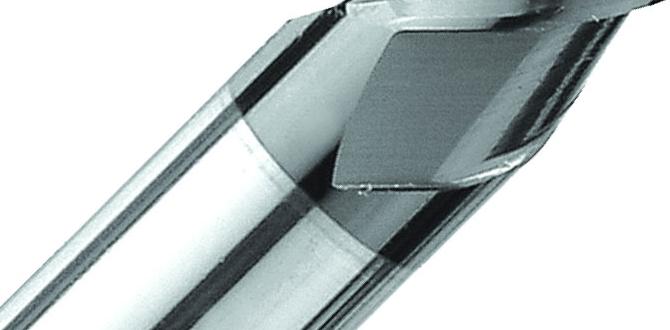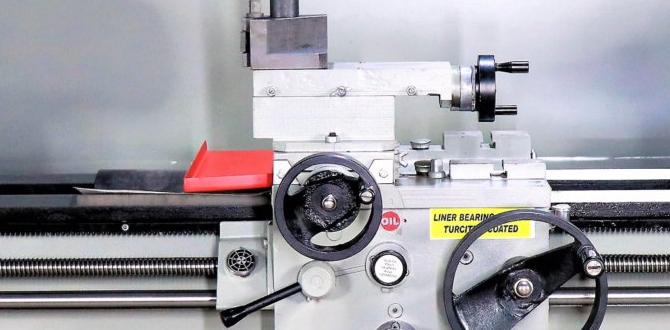Quick Summary: Finding studs in plaster and lath walls is tricky, but the right stud finder and techniques make it manageable. This guide teaches you the best methods and tools to accurately locate those hidden structural supports, preventing costly mistakes.
Hey there, fellow makers! Daniel Bates here from Lathe Hub. Have you ever stood in front of an old plaster and lath wall, needing to hang something or drill a hole, and felt a knot of worry in your stomach? You’re not alone. These vintage walls are beautiful but notoriously stubborn when it comes to finding what’s behind them. Unlike modern drywall, plaster and lath have a unique structure that can fool many standard stud finders. But don’t let those wavy surfaces intimidate you! With a little know-how and the right approach, you can confidently pinpoint those hidden studs. We’ll walk through the best strategies to make this task simple and stress-free, so you can get to work with peace of mind.
Why Plaster and Lath Walls are Tricky
Old homes often boast the charm of plaster and lath walls. These walls are constructed with wooden strips, called lath, attached to wall studs, and then covered with layers of plaster. This creates a strong, sturdy wall, but it also presents a challenge for modern electronic stud finders. The density of the plaster, the air pockets between the lath, and the sometimes irregular placement of the wooden lath can all interfere with the sensors of typical stud finders. This often leads to false positives or readings that are just plain wrong, leaving you frustrated and unsure where to drill. Understanding this construction is the first step to overcoming it.
The Science (and Art) of Finding Studs
Standard electronic stud finders are designed to detect changes in density behind a flat surface like drywall. They use magnetic sensors (for metal studs) or electrical impedance (for wood or metal studs) to find the solid mass of a stud. However, with plaster and lath, the material isn’t uniform. The plaster can be thick, the lath can have gaps, and the wood studs themselves might not be perfectly square or consistently spaced. This means a simple sweep of a conventional stud finder might miss the stud altogether or register the lath strips as studs, leading to guesswork.
Choosing the Right Stud Finder for Plaster and Lath
When tackling plaster and lath, not all stud finders are created equal. Some work better than others, and some specialized tools are designed specifically for these older wall types. It’s worth investing in the right tool to save yourself time and potential damage.
1. Professional-Grade Electronic Stud Finders (with Calibration!)
While basic models can struggle, more advanced electronic stud finders often have superior sensor technology and crucial features like edge detection and depth settings. The key is proper calibration. You must calibrate these devices on a clear section of the wall before scanning.
Key Features to Look For:
- Deep Scan Mode: Plaster and lath walls are often thicker than drywall. A deep scan feature can penetrate further.
- Edge Detection: This helps find the edge of a stud, which is often more reliable than finding the center on irregular surfaces.
- Multi-Sense Technology: Some high-end models use multiple sensors to get a more accurate reading.
- Adjustable Sensitivity: While not always present, this can help fine-tune the readings.
2. Magnetic Stud Finders
These are often overlooked but can be surprisingly effective for plaster and lath. Magnetic stud finders work by detecting the metal nails or screws that fasten the lath (and drywall, if present) to the wooden studs. They don’t rely on density changes in the wall material itself, making them less susceptible to plaster variations.
How They Work: A strong magnet inside the tool will either stick or point towards the metal fasteners holding the framing together. You might need to hold it at different angles and scan slowly.
Pros:
- Simple to use – no batteries or calibration needed.
- Unaffected by plaster thickness or density.
- Can be very inexpensive.
Cons:
- Only detects studs with metal fasteners. If a lath strip was attached with plaster alone (rare but possible), it won’t find it.
- Might not detect the exact center of the stud if fasteners are offset.
- Less useful for non-nail-based construction.
3. Radar/Wall Scanners
These are the most sophisticated (and often most expensive) tools. Wall scanners use radar or microwave technology to map out what’s behind the wall, detecting studs, pipes, and wires. They provide a visual representation on a screen, offering a more comprehensive view.
Pros:
- Can detect studs, pipes, and electrical wires, preventing accidental damage.
- Provides a detailed picture of what’s behind the wall.
- Very accurate when used correctly.
Cons:
- Significantly more expensive than other types.
- Can have a learning curve to interpret the readings accurately.
- Some models may still have difficulty distinguishing between lath and stud in very complex plaster.
| Stud Finder Type | Best For Plaster & Lath? | Ease of Use | Cost | Key Advantage | Key Disadvantage |
|---|---|---|---|---|---|
| Electronic (Advanced) | Good (with calibration) | Moderate | $$ | Deep scan, edge detection | Requires proper calibration |
| Magnetic | Very Good | Easy | $ | Unaffected by plaster density, detects fasteners | Only finds studs with nails/screws |
| Radar/Wall Scanner | Excellent | Moderate to Difficult | $$$ | Detects studs, wires, pipes; visual display | Expensive, can be complex |
The Step-by-Step Guide to Finding Studs in Plaster and Lath
No matter what tool you choose, a systematic approach is your best friend. Here’s how to find those elusive studs:
Preparation is Key
Before you start scanning, do some homework:
- Gather Your Tools: Have your chosen stud finder, a pencil, and potentially some small finishing nails or a thin drill bit ready.
- Know Your Wall: Is it plaster and lath, or is there also a layer of drywall? Older homes can have renovations.
- Find the Corners: Studs are almost always present at the inside and outside corners of a room. Start by checking these areas.
- Look for Clues: Examine the wall for any faint vertical lines or slight irregularities that might indicate where studs are placed. Sometimes, electrical boxes for outlets and switches are mounted directly onto studs.
Step 1: Initial Electronic Scan (If Using an Electronic Finder)
If you’re using an electronic stud finder, this is where calibration is vital.
- Calibrate: Place the stud finder flat against the wall in an area you believe is between studs. Press and hold the calibration button according to your device’s instructions. Wait for the confirmation beep or light.
- Scan Slowly: Move the stud finder horizontally across the wall, at a consistent speed. Move with the arrow or direction indicated on your device.
- Identify Potential Studs: As you move, watch for the indicator lights or audible beeps. Note where the device signals something. Plaster and lath can give multiple intermittent signals, so don’t stop at the first one you see.
- Scan Edges: Once you get a signal, mark it with a pencil. Then, move the finder back to the marked spot and scan slowly towards the signal. Mark the edge where the signal begins. Then, move the finder past that point and mark where the signal stops. The stud is usually between these two points.
- Scan Vertically: After finding a potential stud horizontally, run the stud finder vertically above and below your initial mark. Studs are typically 16 or 24 inches apart on center. This vertical scan confirms you’re finding a continuous vertical element. If the signals don’t line up, you might be detecting lath or a nail, not a stud.
Step 2: Magnetic Scan (Even if Using Electronic)
This is a great cross-check, or a primary method if you prefer.
- Scan Horizontally: Hold the magnetic stud finder flat against the wall. Slowly move it across the area where you suspect a stud.
- Feel the Pull: The strong magnet will subtly pull towards any metal nails or screws fastening the lath to the stud.
- Mark the Pull Points: Feel for the strongest point of magnetic attraction. Make a small pencil mark where this occurs.
- Scan Vertically: Once you find a horizontal line of these “pull points,” scan vertically up and down the wall from that line. You should find continuous vertical lines of nail or screw heads if you’re aligned with a stud.
- Cross-Reference: Compare the locations identified by your magnetic finder with those found by your electronic finder. If both point to the same area, you’ve likely found a stud.
Step 3: The “Probing” Method (Use with Caution!)
This is a more hands-on method used as a last resort or confirmation. It involves making very small, discreet holes to confirm what’s behind the wall.
- Mark Potential Areas: Based on electronic or magnetic scans, identify the most likely stud locations.
- Use a Small Nail or Pin: Get a thin finishing nail or even a sturdy sewing needle.
- Poke Gently: At your marked stud locations, carefully push the nail into the wall.
- Feel the Resistance:
- If the nail goes in easily, you’re likely through the plaster and lath and into an empty space (between studs).
- If you meet solid resistance almost immediately after passing the plaster, you’ve hit a stud.
- If you hit a nail or screw head, you’re in the right general area.
- Make a Tiny Hole: If you’re very confident, you can use a tiny drill bit (like 1/16 inch) to make a small hole for confirmation. Always do this in an inconspicuous area.
- Patch It Up: Any small holes can be easily filled with spackle or joint compound.
Safety Note: Be extremely cautious when probing plaster and lath. Older homes can have old wiring or plumbing within walls that you don’t want to damage. Never probe an area where you suspect electrical wires are running (e.g., directly above or below an outlet).
For more information on identifying structural elements and electrical safety in renovation, consult resources from reputable building organizations. For instance, the International Code Council (ICC) provides extensive building standards and safety guidelines that can be invaluable for DIY projects.
Alternative and Complementary Techniques
Sometimes, you need to get creative. Here are a few more tips and tricks.
Tap and Listen
This is an old-school method that takes practice. Tap the wall with your knuckle or a small rubber mallet. Listen carefully to the sound. A solid, dull thud usually indicates a stud. A higher-pitched, hollow sound means you’re in a space between studs.
Look for Joist/Stud Spacing Patterns
In most construction, studs are spaced consistently, usually 16 inches or 24 inches apart on center (from the center of one stud to the center of the next). Find one stud, measure 16 or 24 inches over, and check that spot. Continue this pattern.
Check Electrical Boxes and Fixtures
Outlets, light switches, and junction boxes are typically mounted directly onto the side of a stud. Locate these fixtures and scan directly to their left and right. You should find a stud within an inch or two of the box.
Use a Thin Drill Bit for Confirmation
If you’ve identified a likely spot with a stud finder, use a very thin drill bit (1/16″ or 3/32″) to drill a small pilot hole. If you encounter resistance after about 1/2 inch to 1 inch into the wall, you’ve hit wood. If it passes through easily, you missed. Always use a blank wall area and consider where pipes or wires might be before drilling.
Understanding Your Findings
It’s important to remember that plaster and lath walls aren’t perfect. Studs might not be perfectly plumb, and the lath can create air pockets that confuse sensors.
What to Expect
- Varied Signals: Don’t be surprised if your electronic stud finder gives you a long series of weak signals as you pass over a stud. This is due to the irregular nature of the lath and plaster.
- Nail/Screw Heads: Magnetic finders are excellent for locating the fasteners. Often, you’ll find multiple nail heads in a vertical line.
- Accurate vs. Approximate: Even with the best tools, you might get an approximate location rather than an exact center. This is why confirming and marking edges is crucial.
Dealing with Potential Issues
- False Positives: If your finder repeatedly signals a stud but you can’t confirm it with other methods (like tapping or probing), it might be a false reading from the lath or plaster.
- Missed Studs: If you scan an entire area and find nothing, try recalibrating or using a different method. Always check corners and around fixtures first.
- Electrical Lines/Pipes: Be aware that electrical wires and plumbing pipes can run horizontally or vertically between studs. A good wall scanner can help identify these, but if you only have a basic stud finder, always err on the side of caution and be conservative with your drilling. For detailed information on avoiding utility line damage, resources from organizations like The Common Ground Alliance (cga.org) offer vital tips for safe excavation and digging practices, which can apply to wall penetrations too.
Frequently Asked Questions (FAQ)
Q1: Can I use a standard stud finder on plaster and lath walls?
A1: Basic stud finders can work with varying degrees of success. Advanced electronic stud finders with deep scan and edge detection are generally more effective, but proper calibration is essential. Magnetic stud finders are often a reliable choice for plaster and lath.
Q2: What’s the best type of stud finder for old plaster walls?
A2: Magnetic stud finders are excellent because they rely on finding metal fasteners, not wall density. Advanced electronic stud finders with deep scan capabilities and wall scanners are also highly effective, though more expensive.
Q3: My electronic stud finder keeps giving me false readings on my plaster wall. What should I do?
A3: Recalibrate the stud finder on a different section of the wall. Ensure you are moving it slowly and steadily. Try a magnetic stud finder or the “tap and listen” method as a backup. Also, look for physical clues like vertical lines or electrical box locations.
Q4: How do I know if I’ve actually found a stud or just lath?
A4: Lath can sometimes give false signals, especially with inconsistent plaster. Use multiple methods: an electronic finder for density changes, a magnetic finder for nails, and the tap-and-listen method. If you get consistent signals in a vertical line from several consistent points, it’s likely a stud. Probing with a thin nail can confirm.
Q5: What if I can’t find any studs at all?
A5: Double-check your calibration. Try scanning in different directions (horizontally and vertically). Look for the consistent 16-inch or 24-inch spacing pattern from a known point. Check around electrical boxes or corners, as studs are always located there. If all else fails, consider consulting a professional or using a more advanced wall scanner.
Q6: Is it safe to drill into a plaster and lath wall?
A6: It can be, but you must be cautious. Always assume there could be electrical wires or plumbing behind the wall. Use a thin drill bit for confirmation holes in inconspicuous areas and be aware of where utilities typically run. If in doubt, consult a professional or use a diagnostic tool.
Conclusion
Tackling plaster and lath walls might seem daunting at first, but with the right knowledge and tools, you can confidently locate studs. Remember that the key is not just the tool, but the technique.





